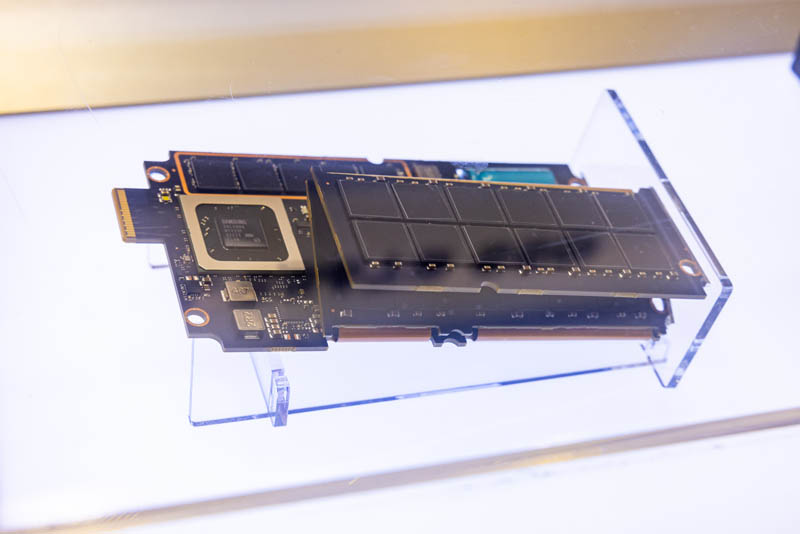This is what the 256TB SSD from Samsung looks like - and no, you won’t be able to put it in your workstation yet
Samsung’s E3.L 256TB QLC SSD adopts a curious ‘accordion’ structure

A new look at Samsung’s gargantuan 256TB first teased earlier this month found that it uses the new E3.L EDSFF form factor and adopts an ‘accordion’ structure to vastly expand the available space for NAND chips.
The drive, spotted at Flash Memory Summit 2023 by Serve the Home, is certainly the SSD with the highest capacity we’ve seen. But it’ll likely be a while before you can take full advantage. It doesn’t have a serial number, for starters, and there's little information by way of retail pricing or a release date. For that reason, it feels like a prototype device.
For reference, the biggest SSD we’ve come across otherwise is the 100TB Nimbus ExaDrive SSD, which is priced at $40,000. Otherwise, they come in at roughly the 64GB mark, with most commercially available SSDs available with much smaller maximum capacities, like the 16TB Teamgroup QX SSD.
Power saver
Many new SSDs in the enterprise space, meanwhile, are adopting the E3.S form factor, but Samsung’s 256TB SSD uses E3.L EDSFF and is a little chunkier by way of consequence, said Serve the Home. The accordion structure is bolted on as a means to house the additional NAND packages – because there isn’t enough room on the PCB to house all 64 V7 1Tb QLC NAND units.
Rather than pushing performance benefits, Samsung has positioned this drive as a means to save power. Its press release, for example, says a single 25ssd6TB SSD consumes seven times less power than eight 32TB SSDs. It’s geared largely to hyperscalers and enterprise users looking for efficiency gains – in terms of physical space as well as power consumption.
It yet remains to be seen how significant the Samsung E3.L 256TB QLC SSD may be in the enterprise space. It’s also difficult to predict pricing, should this prototype make its way into mass production – and you’d expect it to come in at far in excess of the Nimbus’ $40,000 price tag. That said, the potential energy savings might go some way to appeal to hyperscalers willing to invest.
More SSD news from TechRadar Pro
- Largest SSDs and biggest hard drives
- The best SSD: top solid-state drives for your PC
- The best M.2 SSD
Are you a pro? Subscribe to our newsletter
Sign up to the TechRadar Pro newsletter to get all the top news, opinion, features and guidance your business needs to succeed!

Keumars Afifi-Sabet is the Technology Editor for Live Science. He has written for a variety of publications including ITPro, The Week Digital and ComputerActive. He has worked as a technology journalist for more than five years, having previously held the role of features editor with ITPro. In his previous role, he oversaw the commissioning and publishing of long form in areas including AI, cyber security, cloud computing and digital transformation.